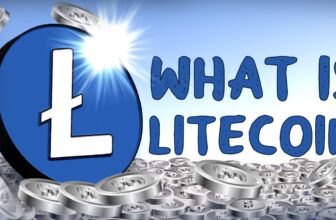
Whether you are new to investing or you are experienced in traditional investment methods, digital assets are an exciting opportunity to grow your wealth in emerging fields. With most digital assets being tied to cryptocurrency, blockchain, and other decentralized technologies, there’s a lot of money to be made if they find adoption by the mainstream.
Consider this your introduction to investing with digital assets. You won’t learn everything about the field here but you can find more at https://www.aspiringentrepreneurs.com/digital-asset-investors.
Table of Contents
Blockchain & Digital Assets
If you are new to this space, you might not even know what cryptocurrencies are or what the blockchain is. So, to start, let’s make sure we’re on the same page.
1. Blockchain

Source: authena.io
Blockchain is a distributed ledger technology. That’s just a database of information that is hosted across thousands of computers worldwide, so no one entity has the power to control the flow of information. Information hosted on blockchains is transparent, with personally identifying data kept anonymized and cryptographically secure. The data is stored in blocks that are chronologically arranged into a chain – blockchain.
While its popularity is tied to cryptocurrency, blockchain tech can be used to store any kind of information. The largest blockchain is a project called Ethereum, whose cryptocurrency Ether is currently the second-most valuable crypto today.
2. Cryptocurrency

Source: techcrunch.com
Cryptocurrency started with Bitcoin, which is why it is the most popular and valuable crypto. Created in 2009, Bitcoin was intended to be a means of transferring wealth quickly and discreetly. Before its price explosions, early adopters used Bitcoin to buy novelties like pizza, spending what would now be worth millions.
Bitcoin isn’t the only cryptocurrency in town, however. If it is a fungible digital asset that makes use of blockchain cryptography to validate transactions, it is a cryptocurrency. Many kinds of cryptocurrency exist, from stable coins pegged to real-world currencies to less-than-reputable projects that are very volatile and sometimes fraudulent.
3. NFTs

Source: news.miami.edu
These have become very popular lately. NFTs are tokens traded on the blockchain but are non-fungible. This means that each unit is unique and so the owner of the NFT owns something unique. How does uniquity exist in digital assets? Because the blockchain can prove you’re the owner. Know more about NFTs uniquity at NFTClub. You can replicate an old baseball card but it won’t be as valuable as the original.
Right now, the tech is being used for digital art to varying levels of success, but it can be applied to anything. It can be used for art, music, videos, audio, and business documents. One of the most interesting applications of NFTs is the ability to code royalties into their smart contract. This means that content creators can sell their NFTs and then earn a cut every time the NFT is sold by somebody else. We also suggest checking out stores like Digital Eyes that are super easy to use.
A Timeline For Digital Assets
We can’t give you the full history of digital assets. Fortunately, we don’t need to because this timeline has everything you need to know.
- 2009: Bitcoin, the first cryptocurrency, is minted.
- 2012: Regulators in Europe permit transactions made with Bitcoin.
- 2014: PayPal and Microsoft services start accepting Bitcoin for certain payments.
- 2015: The Ethereum network goes live with its proprietary cryptocurrency, Ether.
- 2017: Japan legalizes Bitcoin for payment.
- 2018: Samsung leads tech companies in mining cryptocurrencies.
- 2021: El Salvador becomes the first country to embrace Bitcoin as legal tender. Meanwhile, the governments of China, India, and Turkey have instituted bans due to political and economic concerns.
How To Start

Source: abacuspg.com.au
As a growing asset class, you can get started with digital assets by registering with a crypto exchange. These are middlemen who facilitate transactions between cryptocurrencies. There are also decentralized exchanges that take out the middlemen but, while Defi will undoubtedly grow in the future, it’s more niche right now.
Create an account, get verified if needed, and then use your money to buy some crypto or an NFT. From there, it will either appreciate or depreciate. While many crypto projects were intended to be used as currency, most buy and sell them as assets to make US dollars out of them.
By holding cryptocurrency, you can capitalize on positive price movement by selling it for fiat currency. They are best held in a digital wallet, which can be a software app or a physical hard drive-like device. They keep your crypto safe from fraudsters.
You can even trade with derivatives based on cryptocurrencies, as you can with stocks. You can also buy ownership in ETFs that are made by bundling crypto assets together, as happens in the standard stock market.







